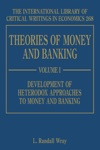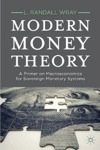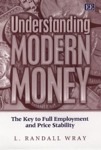The International Labor Office (ILO) has just released a sobering
report on the growing crisis in world labor markets. We began the year with 1.1billion people – one out of every three people in the global labor force – either unemployed or among the 900 million working poor who earn less than US$2 a day. On top of the existing glut of 200 million unemployed, global labor markets will see an average of 40 million new entrants each year. That means that an additional 400 million jobs will need to be created over the next decade in order to prevent a further increase in unemployment. To employ everyone who wants to work, the world needs 600 million new jobs.
The concern, however, is that global growth is decelerating,which means it will be difficult for global labor markets to keep up with the growth of the labor force, much less make up any lost ground. In 2011, global growth slowed from 5.1 percent to just 4 percent, and the IMF is warning of a further deceleration in 2012. The ILO report warns that even a modest slowdown in 2012, say 0.2 percent points, would mean an additional 1.7 million unemployed by 2013. The report also highlights the impact that overly tight fiscal policies have had on growth and employment, beginning with the job-killing austerity programs that have become especially common within the Eurozone. Elsewhere, in nations with ample policy space, governments have lost their appetite for fiscal stimulus, even as heightened insecurity and depressed consumer confidence keep private sector demand weak.
Analytically, the report begins on a high note, with an analysisthat employs the sectoral balance approach that is central to the MMT framework. Here, the report draws out the (negative) implications of declining public budgets on private net savings. Unfortunately, the authors of the report fail to grasp enough MMT to develop a cogent analysis throughout, particularly whenit comes to distinguishing between currency issuers and currency users. As aresult, the report concludes with a weak-kneed policy prescription to address “the urgent challenge of creating 600 million productive jobs over the next decade.”
Below are some excerpts (my emphasis) to give you a sense of the study’s main conclusions:
Even though only a few countries are facing serious and long-term economic and fiscal challenges, the global economy has weakened rapidly as uncertainty spread beyond advanced economies. As a result, the world economy has moved even further away from the pre-crisis trend path and, at the current juncture, evena double dip remains a distinct possibility.
There is growing evidence of a negative feedback loop between the labour market and the macro-economy, particularly in developed economies: high unemployment and low wage growth are reducing demand for goods and services, which further damages business confidence and leaves firms hesitant to invest and hire. Breaking this negative loop will be essential if a sustainable recovery is to take root. In much of the developing world, such sustainable increases in productivity will require accelerated structural transformation – shifting to higher value added activities while moving away from subsistence agriculture as a main source of employment and reducing reliance on volatile commodity markets for export earnings.
Further gains in education and skills development, adequate social protection schemes that ensure a basic standard of living for the most vulnerable, and strengthened dialogue between workers, employers and governments are needed to ensure broad-based development built on a fair and just distribution of economic gains.
Housing and other asset price bubbles prior to the crisis created substantial sectoral misalignments that need to be fixed and which will requirelengthy and costly job shifts, both across the economy and across countries.
To address the protracted labour market recession and put the world economy on a more sustainable recovery path, several policy changes are necessary.
First, global policies need to be coordinated more firmly. Deficit-financed public spending and monetary easing simultaneously implemented by many advanced and emerging economies at the beginning of the crisis is no longer a feasible option for all of them. Indeed, the large increase in public debt and ensuing concerns about the sustainability of public finances in some countries have forced those most exposed to rising sovereign debt risk premiums to implement strict belt-tightening. However, cross-country spillover effects from fiscalspending and liquidity creation can be substantial and – if used in a coordinated way – could allow countries that still have room for maneuver to support both their own economies as well as the global economy. It is such coordinated public finance measures that are now necessary to support global aggregate demand and stimulate job creation going forward.
Second, more substantial repair and regulation of the financial system would restore credibility and confidence…
Third, what is most needed now is to target the real economy to support job growth. The ILO’s particular concern is that despite large stimulus packages, these measures have not managed to roll back the 27 million increase in unemployed since the initial impact ofthe crisis. Clearly, the policy measures have not been well targeted and need reassessment in terms of their effectiveness. … policies that have proven very effective in stimulating job creation and supporting incomes include: the extension of unemployment benefits and work sharing programmes, there-evaluation of minimum wages and wage subsidies as well as enhancing public employment services, public works programmes and entrepreneurship incentives – show impacts on employment and incomes.
Fourth, additional public support measures alone will not be sufficient to foster a sustainable jobs recovery. Policy-makers must act decisively and in a coordinated fashion to reduce the fear and uncertainty that is hindering private investment so that the private sector can restart the main engine of global job creation. Incentives to businesses to invest in plant and equipment and to expand their payrolls will be essential to stimulate a strong and sustainable recovery in employment.
Fifth, to be effective, additional stimulus packages must not put the sustainability of public finances at risk by further raising public debt. In this respect, public spending fully matched by revenue increases can still provide a stimulus to the real economy, thanks to the balanced budget multiplier. In times of faltering demand, expanding the role of government in aggregate demand helps stabilize the economy and sets forth a new stimulus, even if the spending increase is fully matched by simultaneous rises in tax revenues. As argued in this report, balanced-budget multipliers can be large, especially in the current environment of massively underutilized capacities and high unemployment rates. At the same time, balancing spending with higher revenues ensures that budgetary risk is kept low enough to satisfy capital markets.
The report concludes with the following sentence:
At the same time, balancing spending with higher revenues ensures that budgetary risk is kept low to satisfy capital markets. Interest rates will therefore remain unaffected by such a policy choice, allowing the stimulus to develop its full effect on the economy.
And this is my biggest problem with the report: there is no attempt to distinguish countries that must satisfy capital markets from those that need not. As MMT makes clear, governments that issue “modern money” (i.e. non-convertible fiat currencies) can help restore growth by permitting their deficits to expand to the point where the private sector is satisfied with its net saving position. Only governments that that operate with fixed exchange rates or other incarnations of a gold standard must cow-tow to capital markets. A far bolder jobs program could be advanced if people understood the importance of
monetary sovereignty.











